Email Merge
Sends an merged email with document data. The connector includes options to output the document to a folder or include it as an attachment. Functionality includes send the email the user that created the batch, to an AD user that is selected from an Export field or an email address that is represented by a zone value.
Every part of the email can be merged with index data captured from the related document. This includes full mail-merge functionality in the email body.
Settings
Connection
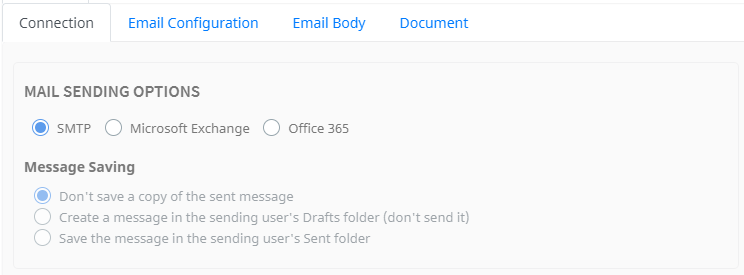
SMTP Settings
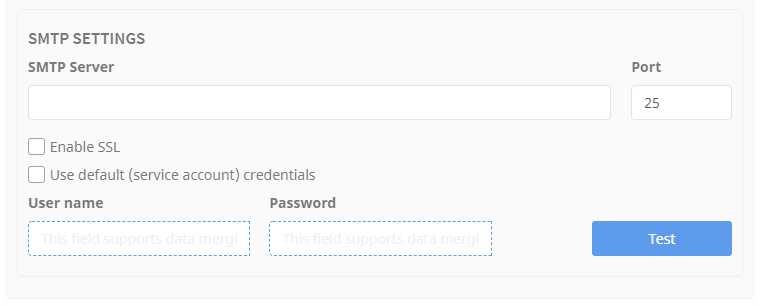
Enter the SMTP email server that will be used to send the email along with the port number. Then choose whether or not to enable SSL (Secure Sockets Layer; provides encryption between a client and a server).
Authentication
Enable or disable using the default (service account) credentials. If not enabled, enter the user name and password for authentication. The ability to test that the connection information is entered correctly is also available.
Where the sender of the emails may not be the user account of the email being sent, email relaying will need to be enabled on the mail server.
Microsoft Exchange Settings
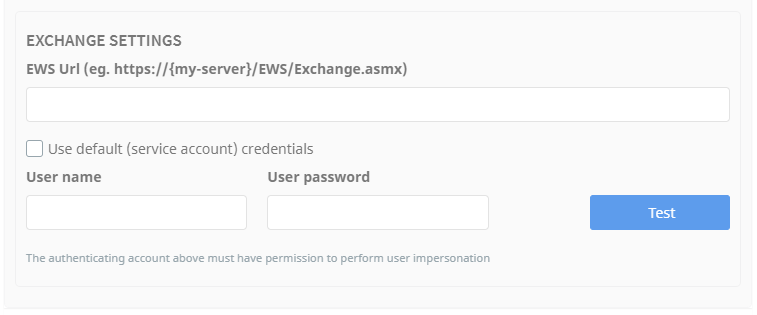
Enter the url of the Exchange web service on your Exchange server.
Authentication
Enable or disable using the default (service account) credentials. If not enabled, enter the user name and password for authentication. The ability to test that the connection information is entered correctly is also available.
Microsoft Office 365 Settings
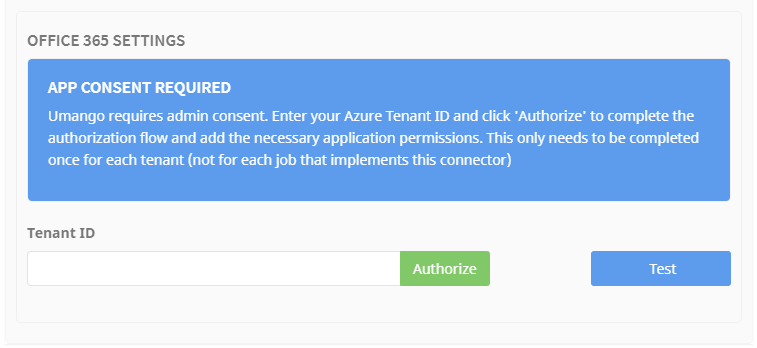
App Consent
In order for Umango to use your organizations Office 365 email server for sending email on behalf of members, Umango requires permission from an administrator of the organization's Azure Tenant. To do this, the admin must compete the authorization process by entering their tenant ID and then completing the application consent authorization flow by clicking "Authorize".
What's a Tenant ID?
Your tenant ID is a unique alpha-numeric value that identified your organization within Azure and Office 365. You can find your tenant id by following the instructions here.
Email Configuration
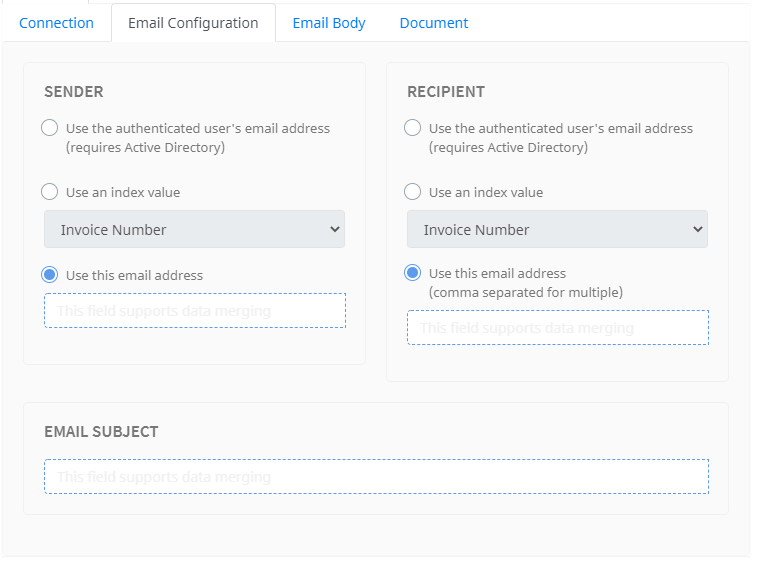
Sender
There are three options available for assigning the sender:
- Use the authenticated user's email address - the user's email address will be retrieved from Active Directory
- Use an index value - usually the export field zone that retrieves the sender address
- Use this email address - enter an email address in the merge field
Recipient
There are three different options available for assigning the recipient.
- Use the authenticated user's email address - the user's email address will be retrieved from Active Directory
- Use an index value - usually the export field zone that retrieves the recipient's address
- Use this email address - enter a fixed address in the merge field. When sending to more than one recipient, separate each address with a comma
Email Subject
Use a merge value to create a subject line for the email.
Email Body
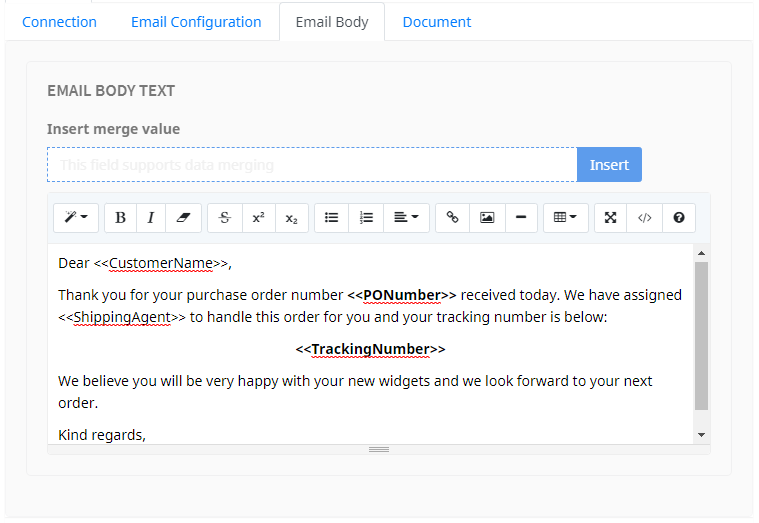
An email body showing sample email merged data.
Email Body Text
The body of the email can be made up of free-form text, merge values, images, links, tables etc. To use merge values, build a merge expression in the merge field and then insert it into the email body at the cursor.
Document
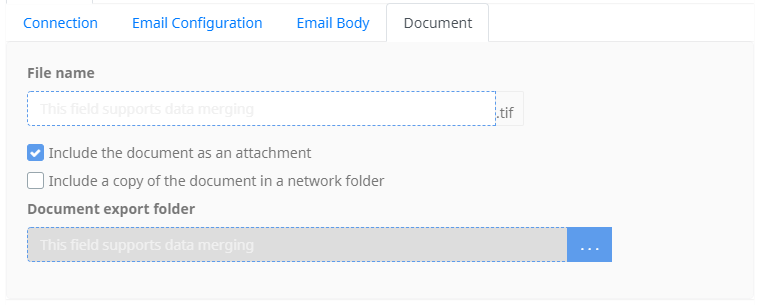
File Name
Use the merge field to create a file name for the document.
Choose whether to include the document as an attachment to the email and/or include a copy of the document in a network folder. When included in a network folder a reference to the file can be used within the email body (a hyperlink). This reduces the size of the email.
File Type Options
File Type Options and related information are available here.